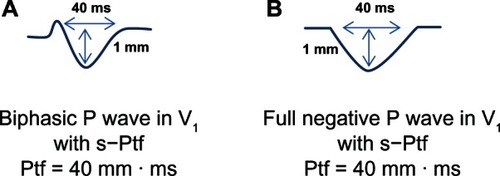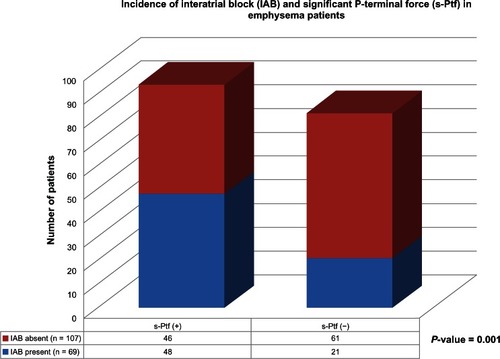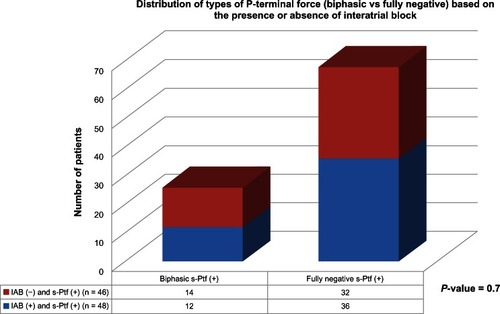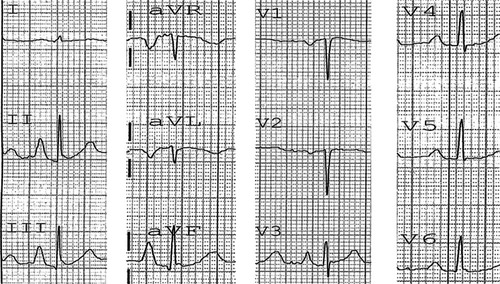Figures & data
Figure 1 (A and B) Schematic illustration of how to calculate Ptf.
Abbreviation: s-Ptf, significant P-terminal force.

Table 1 Incidence of IAB, s-Ptf and type of P-wave morphology in lead V1 in emphysema patients based upon the presence of vertical or non-vertical P-vector
Figure 2 Schematic illustration of the incidence of interatrial block (IAB) and significant P-terminal force (s-Ptf) in emphysema patients.

Figure 3 Distribution of types of P-terminal force (Biphasic vs. Fully negative) based on the presence or absence of interatrial block.

Figure 4 Electrocardiogram of a patient with emphysema.
